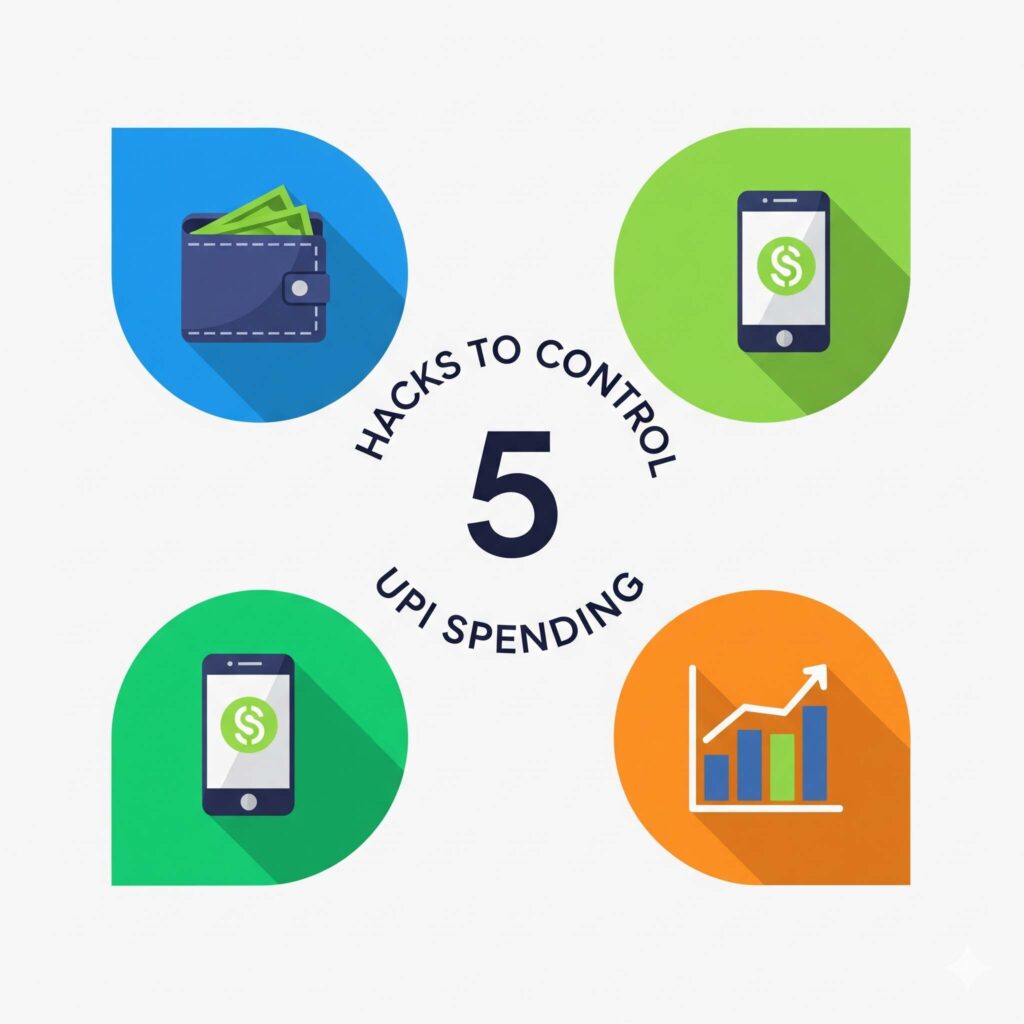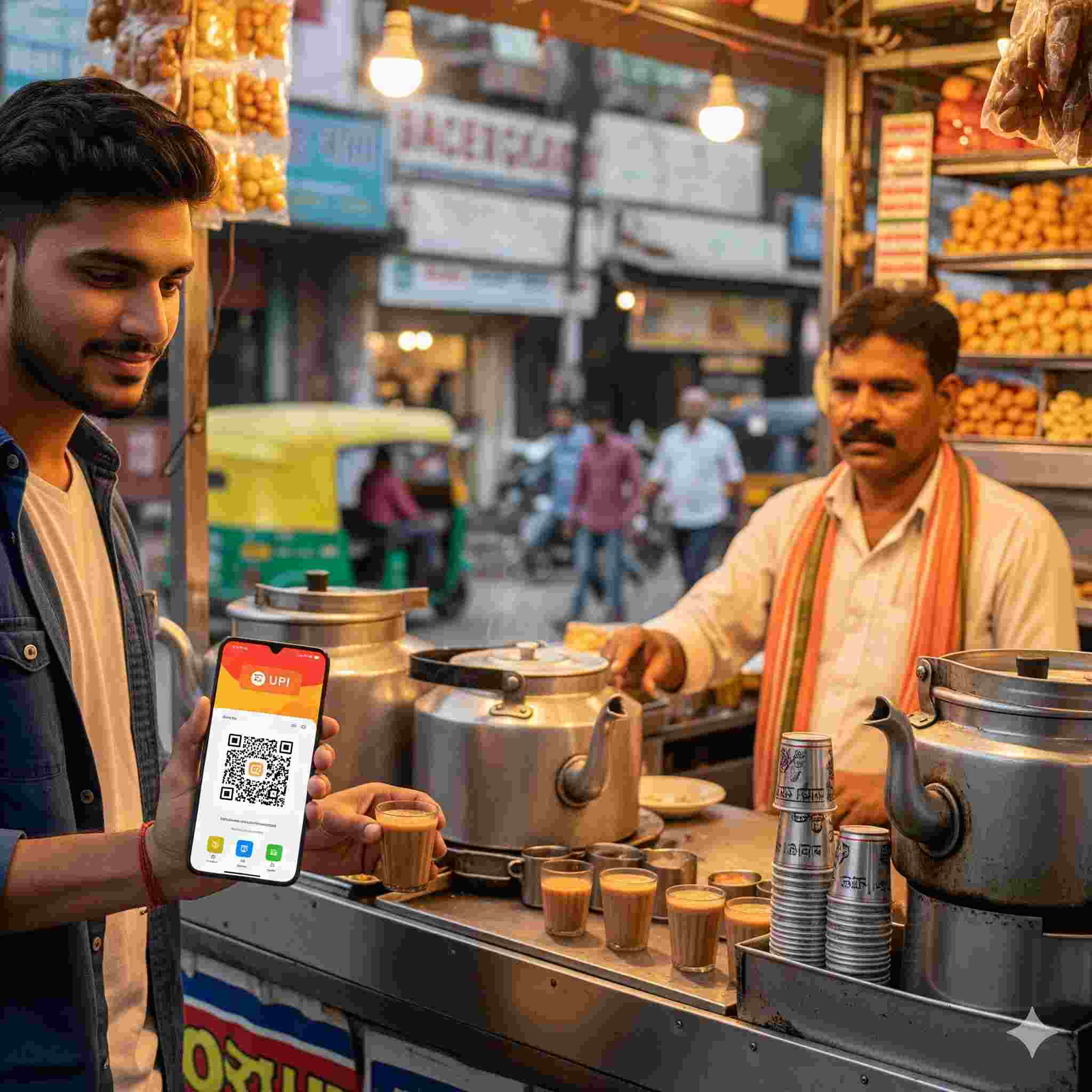UPI has made payments quick and effortless in India, but studies show it also fuels overspending. Instant payments, cashbacks, and auto-debits often push us to spend more than we realize. Here’s why it happens and simple budgeting hacks to stay in control
Introduction
Think about the last time you ordered chai from your local tapri, paid your Uber driver, or cleared your electricity bill—it’s highly likely you used UPI. No searching for change, no waiting. Just scan → tap → done.
But here’s the flip side—many Indians are now spending way more than they realize, thanks to the convenience of UPI. A recent study shows that digital payments often lead to “invisible spending”, where we spend without noticing because the pain of handing over cash is missing.
So, is UPI making us careless spenders? Let’s dig in.

Why UPI Encourages Overspending
1. The “Instant Payment” Trap
With UPI, there’s zero friction. Earlier, if you had to pay ₹200 for street food, you’d feel the pinch while taking cash out. Now, a quick scan and beep done. Psychologists call this the reduced pain of paying.
2. Cashback & Offers
UPI apps like PhonePe, Google Pay, and Paytm often tempt users with scratch cards, rewards, and cashbacks. Sounds fun, but it nudges us to spend on things we don’t always need.
3. Subscription & Auto-Debits
Netflix, OTT, gym memberships, even EMI payments—most are linked to UPI. Since the money quietly leaves your account, many Indians underestimate their monthly expenses.

Real-Life Indian Scenarios
- The Salaried Professional:
Ravi, a 29-year-old IT employee in Mumbai, realized he spent ₹4,500 on Swiggy last month—all paid via UPI. It felt painless until his credit card bill reminded him. - The College Student:
Ananya, a 20-year-old student, spends small amounts daily on coffee, online gaming credits, and online shopping. Individually, they’re ₹50-₹200 transactions. Together, they cross ₹3,000 per month. - The Middle-Class Family:
UPI has replaced cash for groceries, medical bills, and school fees. While convenient, it also makes budgeting tricky, since small spends go unnoticed.

Budgeting Hacks to Control UPI Spending
Set a Weekly UPI Limit
Some banks and apps allow you to set limits. Fix a spending cap—say ₹5,000 per week.
Use Expense Tracking Apps
Apps like Walnut, Moneyview, or Jupiter categorize UPI transactions, showing where your money goes.
Follow the 50-30-20 Rule
- 50% income → essentials (rent, bills, groceries)
- 30% → wants (dining, shopping)
- 20% → savings/investments
Use separate UPI IDs or accounts for these categories.
Create a “Fun UPI Wallet”
Keep a separate wallet app with limited balance (say ₹1,000) for food, cab rides, or shopping. Once it’s over—you stop spending.
Review Your UPI Statement Monthly
Most people check only bank balances, not detailed spends. Make it a monthly ritual.
Conclusion
UPI has revolutionized India’s payment system—no doubt about it. But convenience often comes at the cost of control. By setting limits, tracking expenses, and building mindful habits, you can enjoy the ease of UPI without letting it drain your wallet.
Your turn: How much do you think UPI has changed your spending habits? Share your thoughts in the comments below—I’d love to hear real stories from fellow readers.
Featured Snippet / Summary
UPI has made payments quick and effortless in India, but studies show it also fuels overspending. Instant payments, cashbacks, and auto-debits often push us to spend more than we realize. Here’s why it happens and simple budgeting hacks to stay in control.
